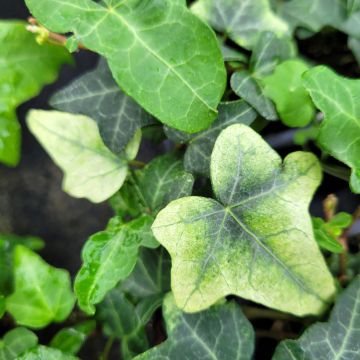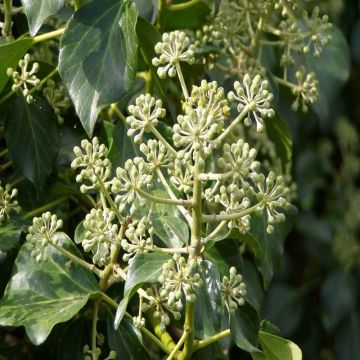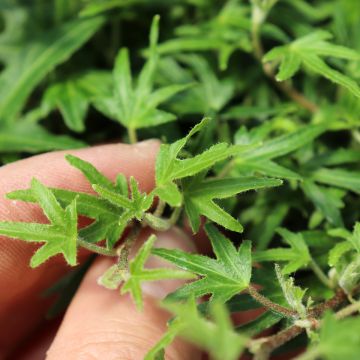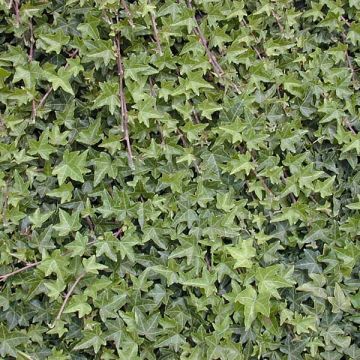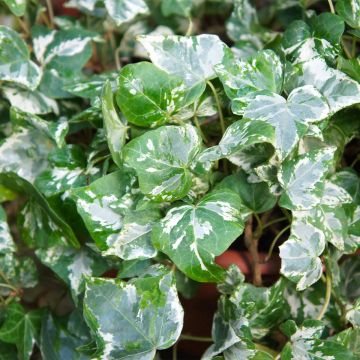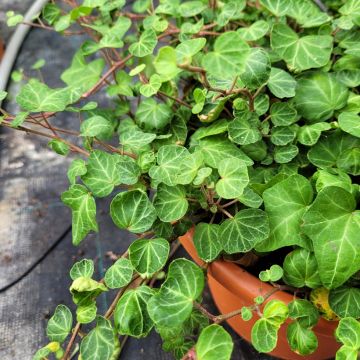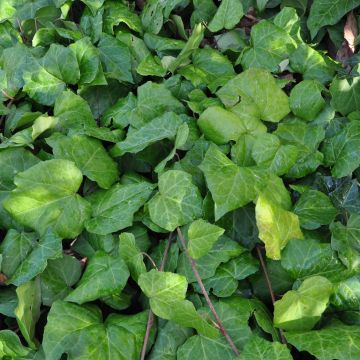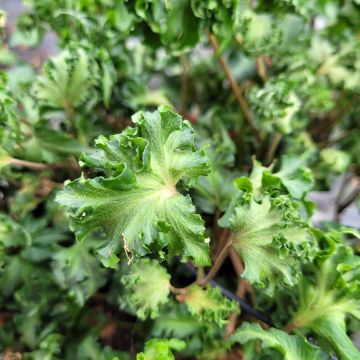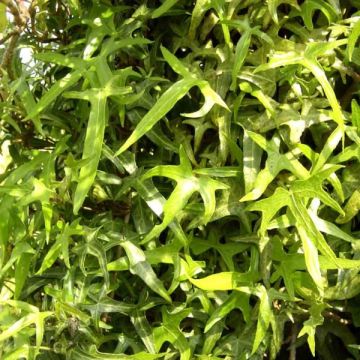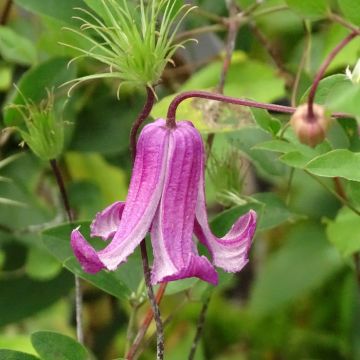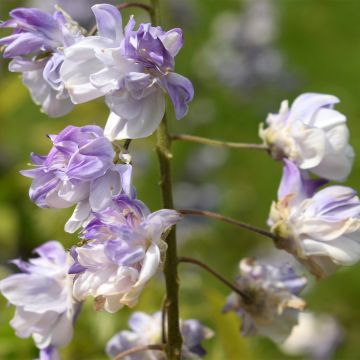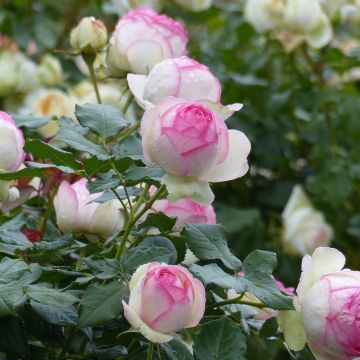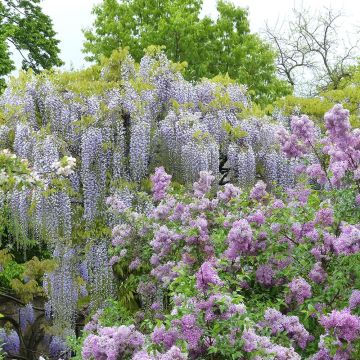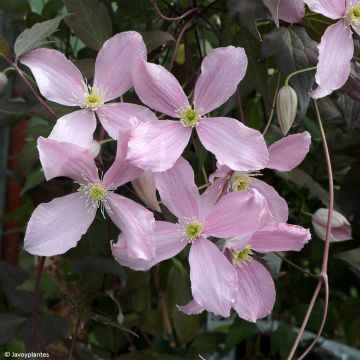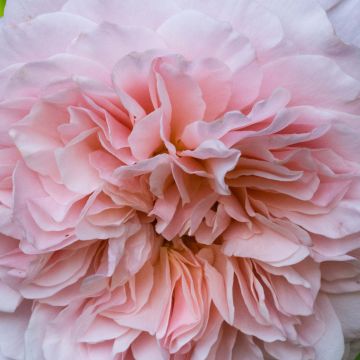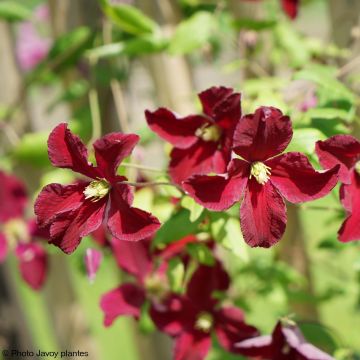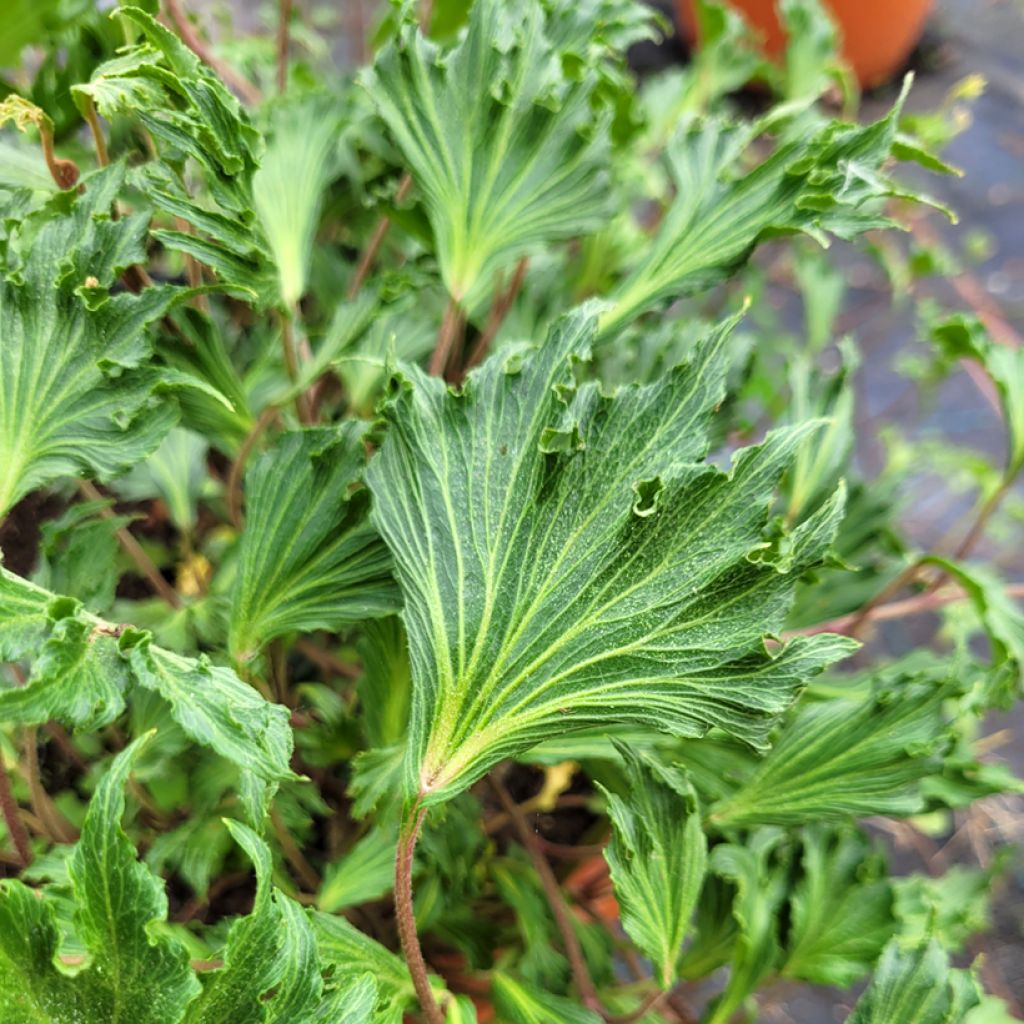

Hedera helix Ivalace Mutation - Common ivy
Hedera helix Ivalace Mutation - Common ivy
Hedera helix Ivalace Mutation
English Ivy, Common Ivy, European Ivy
This item cannot be shipped to the selected country
Delivery charge from €5.90
More information
Schedule delivery date,
and select date in basket
This plant carries a 6 months recovery warranty
More information
We guarantee the quality of our plants for a full growing cycle, and will replace at our expense any plant that fails to recover under normal climatic and planting conditions.
From €5.90 for pickup delivery and €6.90 for home delivery
Express home delivery from €8.90.
Does this plant fit my garden?
Set up your Plantfit profile →
Description
Hedera helix ‘Ivalace Mutation’ is a natural mutation of the cultivar 'Ivalace' that is truly captivating. It is a small common ivy with slow growth, lightly branched, and graceful, distinguished by its lobed leaves forming small fans. A discreet yet attractive plant, perfect for showcasing in a pot. Suited to various growing conditions, this hardy variety withstands cold temperatures well. It prefers shaded to semi-shaded areas and tolerates different soil types as long as they are well-drained.
Ivies belong to the Araliaceae family, related to Ginseng and fatsias. Hedera helix 'Ivalace Mutation' originates from common ivy, found in forests, countryside, and gardens everywhere. It is native to the entire temperate Eurasian zone of the northern hemisphere. Ivy stems cling independently to supports with strong climbing roots. This plant has produced numerous cultivars of varying sizes with diverse foliage, some capable of flowering and fruiting once mature. The foliage on flowering stems, located higher on the plant, differs from that on juvenile stems. Ivy's greenish flower clusters are a great nectar source for bees. They are followed by dark blue-black berries, toxic to humans but a valuable winter food source for birds.
Hedera helix ‘Ivalace Mutation’ is a compact cultivar with distinctive leaves whose lobes curve forward to form small fans. With minimal branching, this cultivar remains discreet yet intriguing with its unique style. Its growth is moderate and under optimal conditions, it can reach a height or spread of 1.50 m depending on whether it climbs or crawls on the ground. Its small, triangular, evergreen, 4 to 5 cm long and wide leaves, feature 7 tapering segments that are more or less curled and crisped. They are light green with almost yellowish veins running through them. The stems attach independently to supports with strong climbing roots.
The perfectly hardy Hedera helix 'Ivalace Mutation' thrives in almost any location except for hot or arid exposures. It is great for adding a touch of charm to a shaded terrace or balcony. Small common ivies are stunning, trained on a small wire structure or cascading in decorative curtains along flower pots. Some companion planting ideas with easy-care woodland perennials include: Epimedium 'Amber Queen', wood anemone, Lamium maculatum 'Purple Dragon', Geranium macrorrhizum 'Olympos', Vinca minor 'Elisa'...
Report an error about the product description
Plant habit
Flowering
Foliage
Botanical data
Hedera
helix
Ivalace Mutation
Araliaceae
English Ivy, Common Ivy, European Ivy
Cultivar or hybrid
Other Hedera - Ivy
Planting and care
Hedera helix 'Ivalace Mutation', easy to grow in any regular soil, can be planted all year round. It prefers fertile, moist, well-drained soil, but is very accommodating (regarding the presence of limestone or clay if the soil is well worked) and quite resistant to drought once established. It will thrive in partial shade, shade, or morning sun. Plant it in a spot which is sheltered from cold winds to help it establish, and monitor watering during the first 2 years after planting, especially in dry summers. To promote young shoots more quickly, fix the first ones to the ground (layering). You can rejuvenate the base by removing old branches. If desired, prune regularly to shape it. Remove any branches that bear leaves of a different appearance or those that take on an upright and bushy form if necessary.
For container growing, mix 7 parts regular soil, 3 parts potting compost and 2 parts sand. Water regularly and feed monthly during the growing season. Keep the substrate moist.
Planting period
Intended location
Care
This item has not been reviewed yet - be the first to leave a review about it.
Foolproof climbers
Haven't found what you were looking for?
Hardiness is the lowest winter temperature a plant can endure without suffering serious damage or even dying. However, hardiness is affected by location (a sheltered area, such as a patio), protection (winter cover) and soil type (hardiness is improved by well-drained soil).

Photo Sharing Terms & Conditions
In order to encourage gardeners to interact and share their experiences, Promesse de fleurs offers various media enabling content to be uploaded onto its Site - in particular via the ‘Photo sharing’ module.
The User agrees to refrain from:
- Posting any content that is illegal, prejudicial, insulting, racist, inciteful to hatred, revisionist, contrary to public decency, that infringes on privacy or on the privacy rights of third parties, in particular the publicity rights of persons and goods, intellectual property rights, or the right to privacy.
- Submitting content on behalf of a third party;
- Impersonate the identity of a third party and/or publish any personal information about a third party;
In general, the User undertakes to refrain from any unethical behaviour.
All Content (in particular text, comments, files, images, photos, videos, creative works, etc.), which may be subject to property or intellectual property rights, image or other private rights, shall remain the property of the User, subject to the limited rights granted by the terms of the licence granted by Promesse de fleurs as stated below. Users are at liberty to publish or not to publish such Content on the Site, notably via the ‘Photo Sharing’ facility, and accept that this Content shall be made public and freely accessible, notably on the Internet.
Users further acknowledge, undertake to have ,and guarantee that they hold all necessary rights and permissions to publish such material on the Site, in particular with regard to the legislation in force pertaining to any privacy, property, intellectual property, image, or contractual rights, or rights of any other nature. By publishing such Content on the Site, Users acknowledge accepting full liability as publishers of the Content within the meaning of the law, and grant Promesse de fleurs, free of charge, an inclusive, worldwide licence for the said Content for the entire duration of its publication, including all reproduction, representation, up/downloading, displaying, performing, transmission, and storage rights.
Users also grant permission for their name to be linked to the Content and accept that this link may not always be made available.
By engaging in posting material, Users consent to their Content becoming automatically accessible on the Internet, in particular on other sites and/or blogs and/or web pages of the Promesse de fleurs site, including in particular social pages and the Promesse de fleurs catalogue.
Users may secure the removal of entrusted content free of charge by issuing a simple request via our contact form.
The flowering period indicated on our website applies to countries and regions located in USDA zone 8 (France, the United Kingdom, Ireland, the Netherlands, etc.)
It will vary according to where you live:
- In zones 9 to 10 (Italy, Spain, Greece, etc.), flowering will occur about 2 to 4 weeks earlier.
- In zones 6 to 7 (Germany, Poland, Slovenia, and lower mountainous regions), flowering will be delayed by 2 to 3 weeks.
- In zone 5 (Central Europe, Scandinavia), blooming will be delayed by 3 to 5 weeks.
In temperate climates, pruning of spring-flowering shrubs (forsythia, spireas, etc.) should be done just after flowering.
Pruning of summer-flowering shrubs (Indian Lilac, Perovskia, etc.) can be done in winter or spring.
In cold regions as well as with frost-sensitive plants, avoid pruning too early when severe frosts may still occur.
The planting period indicated on our website applies to countries and regions located in USDA zone 8 (France, United Kingdom, Ireland, Netherlands).
It will vary according to where you live:
- In Mediterranean zones (Marseille, Madrid, Milan, etc.), autumn and winter are the best planting periods.
- In continental zones (Strasbourg, Munich, Vienna, etc.), delay planting by 2 to 3 weeks in spring and bring it forward by 2 to 4 weeks in autumn.
- In mountainous regions (the Alps, Pyrenees, Carpathians, etc.), it is best to plant in late spring (May-June) or late summer (August-September).
The harvesting period indicated on our website applies to countries and regions in USDA zone 8 (France, England, Ireland, the Netherlands).
In colder areas (Scandinavia, Poland, Austria...) fruit and vegetable harvests are likely to be delayed by 3-4 weeks.
In warmer areas (Italy, Spain, Greece, etc.), harvesting will probably take place earlier, depending on weather conditions.
The sowing periods indicated on our website apply to countries and regions within USDA Zone 8 (France, UK, Ireland, Netherlands).
In colder areas (Scandinavia, Poland, Austria...), delay any outdoor sowing by 3-4 weeks, or sow under glass.
In warmer climes (Italy, Spain, Greece, etc.), bring outdoor sowing forward by a few weeks.


































